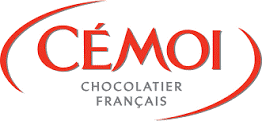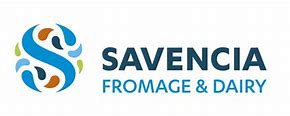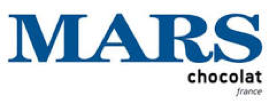Synthèse
The global cocoa market is largely concentrated in Africa, with Côte d'Ivoire and Ghana producing over 60% of the world's cocoa beans, contributing to a total output exceeding 4 million tonnes annually.
Ever-growing Appetite for Responsibly Sourced Indulgence: French Chocolate Consumption Trends
The French market exhibits a discernible trend towards ethical consumption while maintaining a strong demand for chocolate. Annually, the average French individual indulges in between 7 and 8 kilograms of chocolate, positioning France among the top six chocolate-consuming nations globally. This appetite for chocolate is a mix of different types, with approximately a third being dark chocolate and a minority, around 4%, being organic chocolate, which points towards a conscious shift in consumer preferences.
Breaking down the sales within this sweet sector, chocolate bars emerge as the popular choice, with over a third of the total chocolate volume sold being in this format. The market is also responsive to special dietary preferences and trends, with the organic segment gaining ground. The organic chocolate market, while still a smaller fraction of the industry, had a market share of about 4% in 2021, an increase from 3.8% in the previous year. This figure is representative of the organic craze sweeping through the nation, where France stands as the second-largest European market for organic products, with sales reaching between 12 and 13 billion euros.
In terms of market structure, a large proportion of the chocolate available in France is imported, with the nation importing chocolate worth between 3 and 4 billion dollars and exporting to the tune of between 2 and 3 billion dollars in 2021. The import-export coverage rate has hovered slightly below 60% in recent years, underscoring France's role as a significant net consumer in the global chocolate market. The rise in preference for organic products, in general, is substantial, with between 70 and 75% of French consumers expressing a reinforced inclination towards responsible consumption post the health crisis. However, they equally acknowledge the challenge of forgoing imported goods such as chocolate, which for many remains an irresistible treat.
Consequently, the Bean-to-bar phenomenon, which encapsulates direct control from cocoa bean procurement to chocolate bar production, echoes these trends and ambitions. Despite being a niche with approximately 60 chocolatiers in this category, including renowned names, it represents a burgeoning sector that aligns with ethical, sustainable, and qualitative consumption philosophies embraced by a growing number of French consumers. As the trend continues to gain traction, Bean-to-bar may redefine French chocolate consumption, promoting an industry that prides itself on transparency, fairness, and a smaller environmental footprint.
Legislation in France strictly regulates cocoa and chocolate production and labeling, with various VAT rates—standard at 20% and reduced at 5.5%—depending on the product category. The chocolate industry has called for the standardization of VAT rates to boost competitiveness and consumption.
Key Cocoa and Chocolate Industry Players: Domination by Multinational Titans and Selective Artisanal Influencers
Within the dynamic and complex world of cocoa and chocolate production, several key players stand out for their significant impact on the global market. These companies, often multinational conglomerates, exert substantial influence over various stages of the cocoa value chain, from sourcing and processing to the manufacturing of finished chocolate goods.
- At the forefront of the upstream cocoa industry are the farmers—the primary source of cocoa bean cultivation. They lay the foundations of the supply chain, handling the labor-intensive tasks of planting, harvesting, and drying cocoa beans. While these smallholder farmers are prolific in numbers, producing approximately 80% of the world’s cocoa supply, they often operate on family plantations averaging less than 10 hectares in size. Despite their crucial role, these farmers tend to have limited market power and face vulnerabilities to the volatility of global commodity prices.
- Transitioning to the downstream segment of the cocoa pipeline, we encounter some of the Western world's dominant multinational corporations. These giants control a large share of the cocoa mass production, a critical semi-finished product for the entire chocolate industry. This includes tasks such as cleaning, drying, roasting, hulling, and grinding of beans, with activities centralized in developed regions like Europe and the Americas. Notably, a small cluster of global conglomerates presides over an outsized portion of this market segment, exhibiting considerable control over the supply and price of these essential cocoa derivatives.
- In the realm of chocolate manufacturing and distribution, ten principal companies emerge as the titans, collectively owning 42% of the chocolate products' final market share. Their operations span from producing industrial couverture chocolate to an array of confectionery goods that eventually find their way to the hands of consumers. Here again, there is a marked concentration of power, with these leading corporations having the ability to shape consumer trends, dictate pricing structures, and set industry standards.
- On the artisanal side, the 'Bean-to-bar' movement represents a niche yet growing segment of chocolate producers committed to ethical sourcing and premium product quality. Although these artisanal chocolatiers occupy a much smaller portion of the market when compared to their industrial counterparts, they wield considerable influence in setting trends for sustainability and craftsmanship in chocolate production.
- Renowned names such as Bonnat, Pralus, Bernachon, and Ducasse stand out, reflecting a commitment to quality and ethical practices that resonate with the evolving desires of consumers for responsible consumption.
à la compréhension de ce marché
Détail du contenu
 Informations
Informations
- Nombre de pages : 30 pages
- Format : Version digitale et PDF
- Dernière mise à jour : 15/11/2021
 Sommaire et extraits
Sommaire et extraits
1 Market overview
1.1 Definition and scope of study
Cocoa is the powder obtained by grinding cocoa beans, the fruit of the cacao tree. The cocoa industry is clearly divided into :
- The upstream part, which consists of cultivating cocoa plantations, recovering the cocoa beans and drying them. This primary upstream industry is the virtual monopoly of developing countries;
- The primary downstream part, which consists in transforming the raw beans into "cocoa mass", a semi-finished product used by the entire chocolate industry (cleaning, drying, roasting, etc.).this is a semi-finished product used by the entire chocolate industry (cleaning, drying, roasting, hulling and grinding), which sometimes takes place directly on the production site, but is more often the preserve of Western multinationals;
- The secondary downstream part, which consists in the production of chocolate and other by-products that are ultimately distributed to end consumers. These secondary and tertiary activities are largely concentrated in developed countries;
Between these key segments of the cocoa value chain, there is of course the transport industry, particularly maritime transport, which links the different geographies involved.
The world cocoa market is a globalized market that operates in a way typical of commodity markets.
Production is largely concentrated in Africa , with Côte d'Ivoire and Ghana alone accounting for over 60% of the world's cocoa output of over 4 billion tonnes. The other key countries in global production are other African countries, South American countries and Indonesia. It should be noted that 80% of world production comes from family plantations of less than 10 hectares.
On the downstream side of the industry, Europe and the Americas account for the lion's share of global processing and consumption. It should also be noted here that a few Western multinationals control a substantial share of the global end-product market. It should be emphasized that this global commodity market is largely shaped by the impact of financial markets , since world prices for physical trade and cocoa futures are set on the London and New York markets.
In France, the chocolate industry represents around 400,000 tonnes, with sales of several billion euros and tens of thousands of direct jobs.
 Liste des graphiques
Liste des graphiques
- Production de cacao
- Répartition des pays producteurs de cacao
- Répartition des importations de produits cacaotés
- Commerce extérieur de cacao
- Principaux importateurs cacao
Toutes nos études sont disponible en ligne et en PDF
Nous vous proposons de consulter un exemple de notre travail d'étude sur un autre marché !
Dernières actualités
Entreprises citées dans cette étude
Cette étude contient un panorama complet des entreprises du marché avec les derniers chiffres et actualités de chaque entreprise :
 Choisir cette étude c'est :
Choisir cette étude c'est :
Accéder à plus de 35 heures de travail
Nos études sont le résultat de plus de 35 heures de recherches et d'analyses. Utiliser nos études vous permet de consacrer plus de temps et de valeur ajoutée à vos projets.
Profiter de 6 années d'expérience et de plus de 1500 études sectorielles déjà produites
Notre expertise nous permet de produire des études complètes dans tous les secteurs, y compris des marchés de niche ou naissants.
Notre savoir-faire et notre méthodologie nous permet de produire des études avec un rapport qualité-prix unique
Accéder à plusieurs milliers d'articles et données payantes
Businesscoot a accès à l'ensemble de la presse économique payante ainsi qu'à des bases de données exclusives pour réaliser ses études de marché (+ 30 000 articles et sources privées).
Afin d'enrichir nos études, nos analystes utilisent également des indicateurs web (semrush, trends…) pour identifier les tendances sur un marché et les stratégies des entreprises. (Consulter nos sources payantes)
Un accompagnement garanti après votre achat
Une équipe dédiée au service après-vente, pour vous garantir un niveau de satisfaction élevé. (+33) 9 70 46 55 00
Un format digital pensé pour nos utilisateurs
Vous accédez à un PDF mais aussi à une version digitale pensée pour nos clients. Cette version vous permet d’accéder aux sources, aux données au format Excel et aux graphiques. Le contenu de l'étude peut ainsi être facilement récupéré et adapté pour vos supports.
 Nos offres :
Nos offres :
the cocoa market | France
- Quels sont les chiffres sur la taille et la croissance du marché ?
- Quels leviers tirent la croissance du marché et leur évolution ?
- Quel est le positionnement des entreprises sur la chaine de valeur ?
- Comment se différencient les entreprises du marché ?
- Données issues de plusieurs dizaines de bases de données
Pack 5 études (-15%) France
- 5 études au prix de 75,6€HT par étude à choisir parmi nos 800 titres sur le catalogue France pendant 12 mois
- Conservez -15% sur les études supplémentaires achetées
- Choisissez le remboursement des crédits non consommés au terme des 12 mois (durée du pack)
Consultez les conditions du pack et de remboursement des crédits non consommés.
- 03/04/2024 - Mise à jour des données financières de l'entreprise Mars Group
- 03/04/2024 - Mise à jour des données financières de l'entreprise Cémoi (Sweet Products)
- 02/01/2024 - Mise à jour des données financières de l'entreprise Jeff de Bruges
- 02/01/2024 - Mise à jour des données financières de l'entreprise De Neuville (Savencia Groupe)
- 02/01/2024 - Mise à jour des données financières de l'entreprise Mars Group
- 02/01/2024 - Mise à jour des données financières de l'entreprise Cémoi (Sweet Products)
- 01/10/2023 - Mise à jour des données financières de l'entreprise Jeff de Bruges
- 01/10/2023 - Mise à jour des données financières de l'entreprise De Neuville (Savencia Groupe)
- 01/10/2023 - Mise à jour des données financières de l'entreprise Mars Group
- 01/10/2023 - Mise à jour des données financières de l'entreprise Cémoi (Sweet Products)
- 06/07/2023 - Ajout des informations de l'entreprise Valrhona (Savencia Fromage & Dairy)
- 06/07/2023 - Ajout des informations de l'entreprise Never dy
- 06/07/2023 - Ajout des informations de l'entreprise Maison du Chocolat
- 06/07/2023 - Ajout des informations de l'entreprise Des Lis chocolat
- 06/07/2023 - Ajout des informations de l'entreprise De Neuville (Savencia Groupe)
- 06/07/2023 - Ajout des informations de l'entreprise Chocolatrie Janin
- 04/06/2023 - Mise à jour des données financières de l'entreprise Jeff de Bruges
- 04/06/2023 - Mise à jour des données financières de l'entreprise Mars Group
- 21/05/2023 - Mise à jour des données financières de l'entreprise Cémoi (Sweet Products)
- 26/02/2023 - Mise à jour des données financières de l'entreprise Jeff de Bruges
- 26/02/2023 - Mise à jour des données financières de l'entreprise Mars Group
- 21/02/2023 - Mise à jour des données financières de l'entreprise Savencia Fromage & Dairy
- 20/02/2023 - Mise à jour des données financières de l'entreprise Cémoi (Sweet Products)





 Le chocolatier De Neuville condamné à une amende de 4 millions d’euros - 15/02/2024
Le chocolatier De Neuville condamné à une amende de 4 millions d’euros - 15/02/2024
 Chocolat : Fortwenger reprend le site Cémoi dans le Bas-Rhin - 18/06/2023
Chocolat : Fortwenger reprend le site Cémoi dans le Bas-Rhin - 18/06/2023
 La gourmandise et la Maison du Chocolat - 16/06/2023
La gourmandise et la Maison du Chocolat - 16/06/2023
 Bénéfice net Savencia en 2022 en baisse - 09/03/2023
Bénéfice net Savencia en 2022 en baisse - 09/03/2023




















